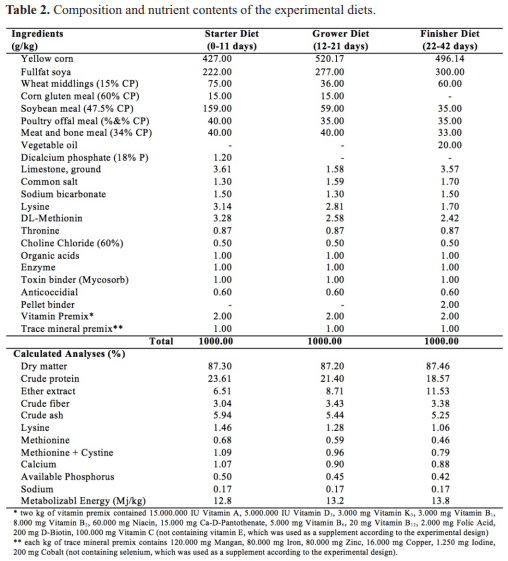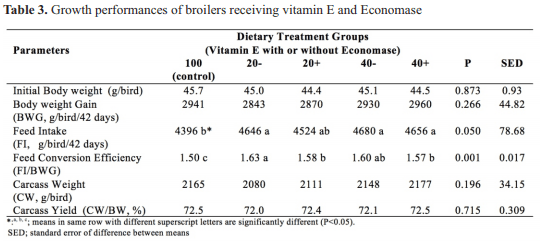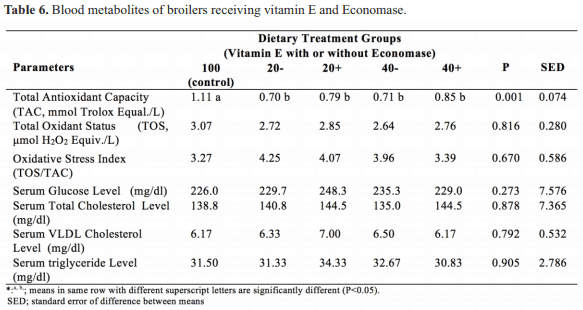Introduction
It is well known that any molecule with an atom that contains a single unpaired electron in its outer orbit is termed an oxidant. These atoms are unstable and have a strong attraction for the electrons of other atoms or molecules in order to regain their resting state. The process of transferring electrons to the oxidant is termed oxidation, and a new free radical is formed in the process (Surai, 2002). In fact, oxidation is a very general process, which affects lipids, pigments, proteins, DNA, carbohydrates, and vitamins (Kanner, 1994). In muscle and fat tissue, oxidation continues post-mortem and affects the shelf-life of meat and meat products. It is generally accepted that lipid oxidation is one of the primary mechanisms of quality deterioration in foods, especially in meat products (Kanner, 1994; Morrissey et al., 1998). The latter becomes more important because of a trend toward increasing the polyunsaturated fatty acids (PUFA long-chain) content (Smet et al., 2008) due to the nutritionists' recommendations to reduce intake of saturated fatty acids, as a high degree of polyunsaturation accelerates oxidative processes leading to deterioration in physical and chemical characteristics, such as meat flavour, colour, texture, water holding capacity besides nutritional value (O'Neill et al., 1998; Coetzee and Hoffman, 2001). The major strategies for preventing lipid oxidation are, therefore, the use of antioxidants. In fact, antioxidants can be organic or inorganic and nutrient or non-nutrient in nature. They function to protect animal tissue against highly reactive oxygen containing products produced chemically and by metabolism. These so-called reactive oxygen species (ROS) can be organic or inorganic compounds in which oxygen is a critical component. Their production is linked to the use of oxygen as the primary electron acceptor in aerobic metabolism. Compounds such as superoxide anion (O2), hydrogen peroxide (H2O2), hydroxyl radical (OH), alkoxyl radical (RO) and peroxyl radical (ROO) attack cellular lipid, protein, DNA and carbohydrate. Chemical attacks on the unsaturated fatty acids of cellular membranes produce products such as the peroxyl radical (ROO), which initiates a chain reaction that can lead to compromised cell membranes and eventually cell death, unless a more reactive electron donor, an antioxidant such as alpha-tocopheryl acetate, is introduced, whereupon the chain reaction is blocked (Liebler, 1993).
It is well known that when lipid hydroperoxides are oxidized to peroxyl radicals, the peroxyl radicals react with α-tocopherol much faster than with other polyunsaturated fatty acids. The result is a corresponding organic hydroperoxide and α-tocopheroxyl radical.
The α-tocopheroxyl radical leaves the cell membrane lipid bilayer and enters the surrounding aqueous medium where glutathione peroxidase can use an electron from glutathione to restore α-tocopherol to its active or reduced state. Thus, although Se and vitamin E fulfil distinct functions, an inadequate supply of either can exacerbate the metabolic demand for the other (Burk and Levander, 1999). It is well documented that vitamin E and selenium are the vital nutrient sources to maintain health, growth and product quality in farm animal production. Vitamin E is a fat-soluble nutrient found in body fat depots, plasma lipoproteins, and cell membrane phospholipids, where it serves as an important antioxidant. Selenium (Se) fulfills an antioxidant role as a component of glutathione peroxidases (GSHPx). Se is widely distributed in the body, but the most labile reservoir is in the liver. It is found in body tissue principally as selenomethionine (SeMet) or as selenocysteine (SeCys), the latter found in GSHPx. Both nutrients are should be examined together because of their related functions and similar deficiency signs. However, Se or vitamin E each has unique metabolic roles, and the factors that alter the oxidative state of an animal may differentially affect their dietary needs.
In poultry nutrition, vitamin E and selenium requirements meet through vitamin and trace mineral premixes in diets. As the production and consumption of poultry meat has increased continuously during the last decades in many parts of the world (Pettersen et al., 2004), the increased production with high PUFA contents has demanded considerable quantities of antioxidants, mainly alpha-tocopheryl acetate in order to meet animals' need alive and also consumer satisfaction for meat quality. It has been known that a higher level of natural antioxidants in broiler diets provides a simple method for improving oxidative stability, sensory quality, self-life and acceptability of poultry meat and meat products (Sheehy et al., 1993). However, current market evaluation has shown that price of Vitamin E (dl-alpha-tocopheryl acetate) sharply increased, as its level in broiler diets and total needs of poultry industry have increased. Few attempts have been made to replace or spare vitamin E with natural extracts for oxidative stability in meat with varying degrees of success (Papageorgiou et al., 2003; Basmacioglu et al., 2004; Haak et al., 2006). Smet et al. (2008) found dietary natural antioxidant extracts being less effective than the combination of α-tocopheryl acetate and synthetic antioxidants. They also reported marked differences between different natural antioxidant extracts for protecting broiler meat against oxidation.
Recently, a product called “Economase” has been introduced to the market. The product has been developed through nutrogenomic studies and claimed to replace 80% of Vitamin E and also selenium in order to reduce cost of broiler diets. On the other hand, either vitamin E deficiencies or considerable excesses have been shown to have adverse effects on immune function in birds. Paradoxically, vitamin E in low-density lipoproteins oxidized in vitro in the absence of aqueous antioxidants may act as a prooxidant. However, prooxidant activity of high intakes of vitamin E has not yet been confirmed in vivo (Traber, 1999). It could be speculated that not only because of the cost reason, in order to establish and maintain the physiological equilibrium by preventing any possible negative effect of high level replacement of dietary supplemental vitamin E could be of benefit in broiler production.
The proposed project is aimed to determine whether vitamin E (dl-alpha-tocopheryl acetate) level in the diet could be reduced to 20 or 40 mg/kg by using Economase at 200 g/ton feed without any negative effects on performance, oxidative stability, meat quality and storage stability in countries where vitamin E used in broiler diets at about 100 mg/kg.
Materials and Methods
The present study was carried out in a fully (light moisture-temperature) controlled experimental unit for broilers in Department of Animal Science, Faculty of Agriculture, University of Çukurova, Adana-TURKEY. One hundred, one-day-old male broiler chicks (Ross 308) were divided into five treatment groups (group 1: control (100 mg/kg Vit E; dl-alpha-tocopheryl acetate), group 2: 20 mg/kg Vit E, group 3: 20 mg/kg Vit E +Economase; group 4: 40 mg/kg Vit E, group 5: 40 mg/kg Vit E+Economase, Table 1) of similar mean body weight, comprising 20 birds each. Economase® developed by Alltech's Nutrigenomics Center, Kentucky-USA, is a mix of vitamin E, Sel-Plex and some other antioxidants. The product is claimed to reduce the costs of vitamin E supplementation with 80%, as the special blend makes more vitamin E available on cell lever, which means that less vitamin E and selenium have to be supplemented via the feed.
Experimental diets based on maize and soya were used in a-three stage feeding regime (starter diet 0-10 days, grower diet 11-21 days, finisher diet 22-42 days, Table 2). Experimental diets were formulated to have 0.3 ppm selenium, except the diets containing Economase, which is known to have selenium to meet broilers' need. All the animals were housed in individual cages of a fully controlled experimental room. The birds were fed ad libitum for a period of 42 days under conventional raising conditions. 0 0 Thermoneutral (from 30 reducing to 24 C by 3 C/week) temperature regimes were applied. Light was provided for 24 hours each day and water was continuously available.
Broiler growth performance was assessed by measuring body weight gain, feed intake, feed efficiency (gain/feed), water consumption, carcass weight. Body weight was recorded weekly by weighing individual birds. Weights of feed issued were recorded and feed residues were weighed daily for individual birds. The feed efficiency was determined on weekly basis for individual birds.
At the end of the experiment when the chicks were 6 weeks of age all the birds were slaughtered for carcass evaluation (yield, drip loss, water holding capacity). The carcasses were immediately plucked, eviscerated, scalded and then chilled for 4 hours. Six carcasses per group close to the average group weight were selected and divided into right and left portions to analyse meat quality. The right portion of the breast and thigh meats (without skin) were sampled for tissue oxidation status by thiobarbituric acid reactive substances (TBARS) evaluation on 0, 3, 7 days of 0 storage at +4 C. The left portions were shock-freezed at -75 0 0 C for 12 hours then stored 30 days at -25 C. TBARS analyses of fridge and deep-freeze samples were based on Tarladgis et al. (1960) and is expressed as micrograms of malondialdehyde (MDA) per gram of tissue.
During slaughter process blood samples of the representative animals of each group were also taken to obtain serum in order to analyze for glucose, triglyceride, and also total antioxidant capacity, total oxidant status. Serum glucose, cholesterol and triglyceride concentrations were measured with commercial kits (glucose GOD-PAP; Roche Diagnostics, GmbH, Germany), cholesterol (cholesterol CHOD-PAD; Roche Diagnostics, GmbH, Germany), or triglyceride (triglycerides GPO-PAP; Roche Diagnostics, GmbH, Germany) on an automated KEYLAB LiquiVet Analyzer. Total antioxidant capacity (mmol Trolox Equal./L) and total oxidant status (μmol H2O2 Equiv/L) were analysed using commercial kits (Rel-Assay-Diagnostics, Mega Tip San. Tic. Ltd., Gaziantep-Turkey) by automated colorimetric methods (Erel, 2004, 2005).
Determination of drip loss was assayed using fresh breast fillets which were weighed then placed on polystyrene trays (1/tray), underplayed with an absorbent pad, overwrapped with an oxygen permeable PVC film (6000–8000 3 2 ml/cm /m /24 h), and stored at 4°C under fluorescent light for up to 8 d. Fillets were weighed at 48 h intervals and the drip loss at each time (2, 4, 6, 8 days) point was calculated as the percentage reduction in weight relative (%) to the initial (day 0) weight (O'Neill et al., 1998).
Water holding capacity of breast samples was measured by the press method of Grau and Hamm (1956). A25-gram of fresh breast fillet sample for each replicate was weighed then minced. A 5-gram-minced sample was taken then placed between double filter paper (Schleicher and Schuell 595 150 mm, ref no. 311812) then pressed over a glass vitriol by 2.5 kg weight about 5 minutes. At the end of the time, the sample was weighed to calculate water holding capacity using the formula (Water Holding Capacity, % =100-[(first weight-last weight)/first weight*100)] of Barton-Gade et al. (1993).
The data obtained in the study were analysed using GLM (General Linear Model) procedure of the Statistical Analysis System (SAS, 1996), and Duncan's New Multiple Range Test in SAS was used to identify significant differences among treatments means. Results obtained in this study were presented as means per bird with standard errors of the difference between means (SED).
Results
The results with respect to growth performance, feed intake and feed conversion efficiency are summarised in Tables 3. At the beginning of the trial, all the groups had similar body weight. The results obtained at 6 weeks of age showed that feeding diets containing vitamin E at 20 or 40 mg/kg with or without Economase did not affect body weight significantly; however, the groups receiving 20 mg/kg vitamin E had numerically lower body weight gain than the control and 40 g/kg vitamin E groups. The difference was about 100-120 grams per bird. The groups receiving 40 g/kg vitamin with Economase exhibited the highest weight gain at 42 days old. However, dietary treatments affected feed intake significantly (P<0.05). The control group consumed a significantly lower amount of feed than the groups receiving 20 or 40 mg/kg Vitamin E alone or 40 mg/kg vitamin E with Economase. Results with respect to feed conversion efficiency showed a significant deterioration as the vitamin E levels in the diet reduce. The best conversion efficiency was obtained in the control group. Carcass weight was not affected by the treatment groups but the birds receiving 20 mg/kg vitamin E has almost 60-80 grams less carcass weight than the groups receiving 100 (control) or 40 mg/kg vitamin E with Economase groups. The results showed that dietary treatments had no significant (P>0.05) effects on carcass yield and the groups had similar values.
The results with respect to meat quality showed that dietary treatment did not affect drip loss significantly (P>0.05). Drip loss values obtained on day 2, 4, 6 or 8 increased as the day passed without no significant (P>0.05) difference between treatment groups for the same day. However, water holding capacity was affected significantly (P<0.001) by dietary treatments. The group receiving 20 mg/kg Vit E had significantly lower water holding capacity than the group receiving 100 mg/kg vitamin E or vitamin E (20 or 40 mg/kg) with Economase (Table 4).
The results with respect to tissue oxidation status by thiobarbituric acid-reactive substances (TBARS, mg/kg MDA) obtained on 0, 3, 7 days for fridge (+4C) samples and on 30 days for defreeze (-25C) samples for breast and thigh meats showed significant changes. The both meat samples (breast and thigh) were affected in a similar manner, in which the TBARS values increased (P<0.05) in all groups as they wait +4°C in the fridge. The groups receiving vitamin E at 100 mg/kg or 40 mg/kg with Economase had significantly lower (P<0.05) TBARS values than the group receiving vitamin E at 20 mg/kg alone. The frozen samples analyzed on day 30 had similar TBARS values in all groups, which were lower than their fridge counterparts on day 0.
The results with respect to blood metabolites revealed that dietary treatments had a significant (P<0.001) effect on total antioxidant capacity (TAC). The groups receiving 100 mg/kg vitamin E had significantly higher TAC than the groups receiving 20 or 40 mg/kg vitamin E with or without Economase (Table 6). However, dietary treatment had no significant effect on total oxidant status (TOS); all treatment groups had similar TOS values. Oxidative stress Index, which was calculated by TOS/TAC, was not affected by dietary treatments but the groups receiving 100 mg/kg or 40 mg/kg vitamin E with or without Economase exhibited numerically lower oxidative stress index than the groups receiving 20 mg/kg vitamin E with or without Economase. The results also showed that serum glucose, total cholesterol, VLDL cholesterol and triglyceride concentrations were not affected (P>0.05) by dietary treatments. All the groups had similar values for each parameter (Table 6).
Discussion
The results of the experiment reported here demonstrate a considerable advantage of Economase by sparing vitamin E in broiler diets by about 60 mg/kg under our experimental condition. The results obtained in the experiment showed that the groups receiving 40 mg/kg vitamin E with Economase at 200 mg/kg has similar growth and meat quality performance at 6 weeks of age. However, it was claimed that Economase could spare 80% of vitamin E in broiler diets. Our results could not support this view, as lower performance with respect to growth and meat quality were observed with the diet containing 20 mg/kg vitamin E plus Economase. Our experiment, however, could provide substantial information about Economase and its vitamin E sparing activity about 60%. Our results with respect to performance of broilers receiving vitamin E alone at 20, 40 or 100 mg/kg showed that increasing vitamin E level results in better performance in terms of body growth and also feed efficiency. This observation support the findings of Kennedy et al. (1991), who reported broilers receiving supplemental vitamin E attained 1.4% higher weigh and 0.8% better feed efficiency.
In fact, compared with other meats, broiler meat is relatively abundant in PUFA, as broilers are fast growing animals and their diets are highly nitrogenous and rich in energy, especially with PUFA (e.g. Rhee et al., 1996). An increase in PUFA content influence lipid oxidation and can affect colour, flavour, and, subsequently, oxidative stability during storage, especially under suboptimal storage condition (Basmacioglu et al., 2004). However, it has long been known that lipid oxidation can be retarded by the use dietary antioxidant. It has also been showed that dietary antioxidant supplementation result in good oxidative stability (e.g. Cortinas et al., 2005), even longer and better stability dependent upon antioxidant level and also application length in the diet (Yucelt, 1998; Coetzee and Hoffman, 2001). Vitamin E has been recognised one of the most powerful antioxidant and its commercial source dlalpha-tocopheryl acetate has been mostly used in animal diets. The beneficial effect of dietary α-tocopheryl acetate to meet vitamin E needs and subsequent enhanced stability of lipids in muscle foods has been extensively reported for poultry, beef, veal and pigs (e.g. Gray et al., 1996).
However, as the production and consumption of poultry meat has been increased continuously during the last decades in many parts of the world, this increased has demanded considerable quantities of α-tocopheryl acetate. It has recently been noted that price of α-tocopherol increased and scientist has been focused on natural alternatives (e.g. Smet et al., 2008) or sparing agents for α-tocopherol.
Nutrogenomic studies through nanotechnology could also provide some other alternatives to α-tocopherol. Such a product called “Economase” has been developed and claimed 80% sparing activity of Vitamin E in broiler diets without loss of oxidative stability. The results obtained in the present study show that Economase could have 60% sparing activity of vitamin E in terms of growth and also meat quality with respect to TBARS and other relevant values. The groups receiving Economase with 40 mg/kg vitamin E produce acceptable TBARS values in tight and breast meats on day slaughter and 3 and 7 days storage at 4°C in the fridge. Frigg (1992) reported approximate scale for interpretation of TBARS values in meat and meat products. According to his scale, TBARS values; x 0.2 means good quality, 0.2-0.5 means limited, tolerable, 0.5-1.5 means somewhat oxidised, 1.5-5.0 means oxidised, >5 means rancid, non-edible. Our results showed that feeding a diet with 40 mg/kg Vitamin E with Economase produce limited, tolerable quality of meat up to 3 days storage at 4°C in fridge, similar to the control receiving 100 mg/kg vitamin E. Their values are lower than those obtained with 20 or 40 mg/kg vitamin E levels. These findings may suggest that Economase could provide great synergetic potential for supporting dietary α-tocopherol for oxidative stability. However, previous studies, testing sparing effect or synergistic effects of natural extracts containing antioxidant on the oxidative stability of meat had gained limited success (e.g. Smet et al., 2008). Our results with respect to meat quality also revealed that use of Economase with 40 mg/kg vitamin E produce breast meat having similar drip loss and water holding capacity to the control group receiving 100 mg/kg vitamin E. All these results may suggest that Economase helps vitamin E in maintaining oxidative stability and cell integrity in muscle food.
Our results also revealed that Economase support broiler growth at 40 mg/kg vitamin E level by stimulating feed intake, but not enough to maintain feed conversion efficiency in comparison to the control receiving 100 mg/kg vitamin E. This might be attributed to intestinal epithelium and its integrity, as Economase might not support intestinal epithelium integrity for nutrient absorption. This requires further investigations. Our results with respect to blood metabolites showed that Economase had no significant effects on serum glucose, cholesterol, VLDL cholesterol and triglyceride levels, but increased total antioxidant capacity without significant changes in total oxidant status, meaning that Economase support blood oxidant constituents. It is well known that blood contains primary, secondary and tertiary antioxidants. Primary antioxidants, which prevent formation of free radicals, are SOD, GSHPx, transferin seruloplazmin, etc. The secondary antioxidants, which remove free radicals and prevent their reactions in the body, are vitamin C, vitamin E, beta-carotene, uric acid, bilirubin, albumin, etc. Tertiary antioxidants, which repairs damages given by free radicals, are methionine reductase and DNA repairing enzymes (Mutlu et al., 2009). Economase seems to have poverty to support total body antioxidant pool by enhancing primary, secondary or tertiary antioxidant activity in the body.
The present study was conducted to evaluate sparing effect of Economase for vitamin E. Such an effect of Economase could be of benefit in economical and also immunological point of views. It has been speculated that vitamin E deficiencies or considerable excesses could have adverse effects on immune function in birds. Paradoxically, vitamin E in low-density lipoproteins oxidized in vitro in the absence of aqueous antioxidants may act as a prooxidant. However, prooxidant activity of high intakes of vitamin E has not yet been confirmed in vivo (Traber, 1999). The results of the present study could, therefore, be value for not only reduction in feeding cost, it is also value for establishing and maintaining the physiological equilibrium by preventing any possible negative effect of high level of vitamin E.
In conclusion, the results obtained in the present experiment suggest that vitamin E level in the commercial broiler diets could be reduced to 40 mg/kg with using Economase at 200 mg/kg without loss in growth performance and meat quality.
Acknowledgements
The authors are grateful to Alltech-Turkey, Mr. Ufuk Talay for providing free gift of Economase.
















.jpg&w=3840&q=75)